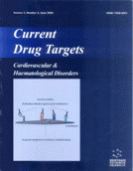Abstract
In renal transplantation, chronic renal transplant failure (CRTF) is the principal cause of late graft loss. Both immunological and non-immunological factors play a role in the pathogenesis of CRTF. However, CRTF is unresponsive to immunosuppressive therapy. In several kidney diseases, inhibition of the renin-angiotensin system (RAS) has shown to reduce the rate of progression of renal disease more effectively than conventional antihypertensive drugs. Therefore, RAS blockade may be of benefit in the treatment of CRTF. Several short-term studies in human renal transplant recipients showed that RAS blockade had a beneficial effect on renal transplant function, blood pressure and proteinuria. Despite these benefits physicians remain reluctant to use ACE inhibition in these recipients, because of fear of functional decrease in renal perfusion, especially in the setting of renal transplant artery stenosis. To study the long-term effects of RAS blockade we used the established Fisher to Lewis (F-L) model for CRTF, which mirrors the progressive changes seen in humans. Studies in our lab and by others showed that RAS blockade in the F-L model prevents proteinuria, glomerulosclerosis and hypertension. However, when treated for 34 weeks with RAS blockade, renal arteries developed severe intimal hyperplasia. This effect was specific for Fisher rats. Syngrafted Fisher rats treated with ACE inhibition developed intimal hyperplasia, but allografting significantly aggravated it. Fisher rats have a four times higher renal ACE activity, compared with the Lewis rat. This is comparable to the human DD / II genotype differences in ACE activity. Renal transplant patients with the DD genotype may be more vulnerable for vascular changes when treated with RAS blockade.
Keywords: transplantation, ace inhibition, chronic renal transplant failure, fisher to lewis model, rat, human, ras
 15
15













